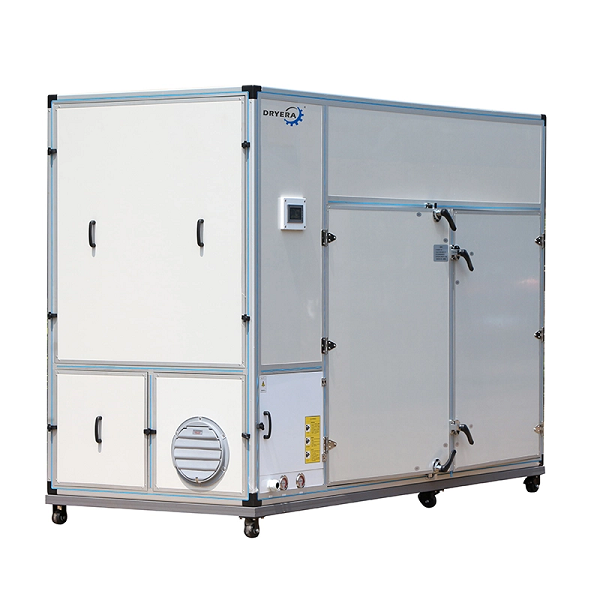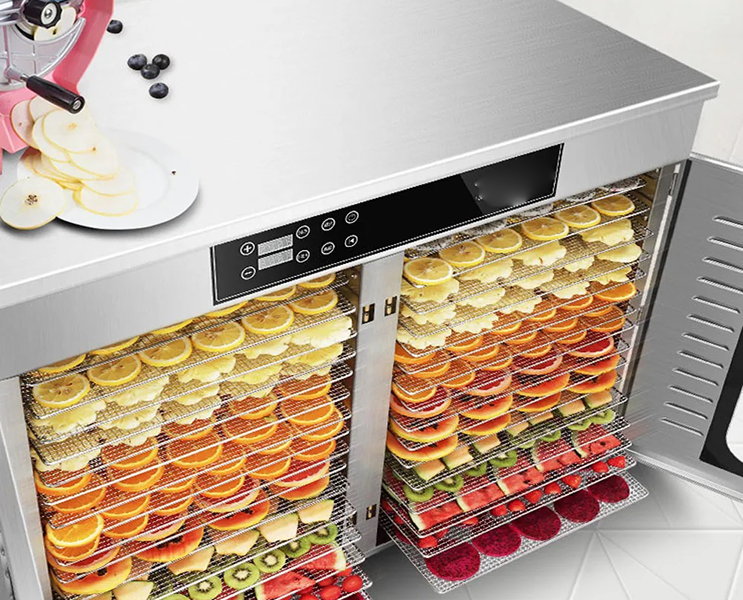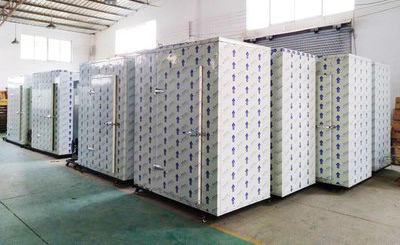
Content Menu
● Understanding Integrated Heat Pump Dryers
>> How Does It Work?
● Advantages of Integrated Heat Pump Dryers
● Applications in Food Drying
● Energy Efficiency Standards
● Choosing the Right Integrated Heat Pump Dryer
● Maintenance Tips
● Environmental Impact
● Future Trends in Dryer Technology
● Conclusion
● FAQ
>> 1. What is an integrated heat pump dryer?
>> 2. How does an integrated heat pump dryer differ from conventional dryers?
>> 3. Can I use an integrated heat pump dryer for food drying?
>> 4. What should I consider when purchasing an integrated heat pump dryer?
>> 5. How do I maintain my integrated heat pump dryer?
In recent years, the demand for energy-efficient appliances has surged, leading to the rise of integrated heat pump dryers. These innovative machines not only provide effective drying solutions but also contribute to sustainability by minimizing energy consumption. This article delves into the workings of integrated heat pump dryers, their advantages, and their applications, particularly in the food drying industry.

Understanding Integrated Heat Pump Dryers
An integrated heat pump dryer is a type of dryer that uses a heat pump mechanism to dry clothes or food products. Unlike traditional dryers that expel hot air and consume significant amounts of energy, heat pump dryers recycle air within the machine. This process allows them to operate at lower temperatures while still achieving optimal drying results.
How Does It Work?
The operation of an integrated heat pump dryer can be broken down into several key steps:
1. Air Intake: The dryer pulls in ambient air from the surrounding environment.
2. Heating: The air passes through a heat exchanger where it is heated using refrigerant fluid.
3. Drying Cycle: The heated air is then circulated through the drum containing the items to be dried. As the warm air passes over the items, moisture is absorbed.
4. Condensation: The moisture-laden air is directed back to the heat exchanger, where it cools down. The moisture condenses and is collected in a reservoir or drained away.
5. Recirculation: The cooled air is reheated and recirculated back into the drum, continuing the drying process until the desired moisture level is achieved.
Advantages of Integrated Heat Pump Dryers
Integrated heat pump dryers offer several benefits that make them an attractive choice for both consumers and manufacturers:
- Energy Efficiency: These dryers use significantly less energy than traditional vented dryers, making them more environmentally friendly and cost-effective in the long run.
- Gentle Drying: The lower drying temperatures help protect delicate fabrics and food products from damage due to excessive heat.
- Versatility: Integrated heat pump dryers can be used for various applications, including drying clothes and food items like fruits, vegetables, and herbs.
- Space-Saving Design: Many models are designed to fit seamlessly into kitchen or laundry spaces, making them ideal for homes with limited space.

Applications in Food Drying
In the food industry, integrated heat pump dryers are gaining popularity for their ability to dry food products efficiently while preserving their nutritional value. Here are some common applications:
- Fruit Drying: Dried fruits are a popular snack option. Heat pump dryers can effectively remove moisture from fruits like apples, bananas, and apricots without losing flavor or nutrients.
- Vegetable Drying: Vegetables such as tomatoes, peppers, and carrots can be dried for long-term storage or use in soups and stews.
- Herb Drying: Fresh herbs can be dried quickly and efficiently using heat pump technology, retaining their essential oils and flavors.
- Meat Drying: Integrated heat pump dryers can also be used for drying meats to create jerky or other preserved meat products. The controlled environment prevents spoilage while ensuring proper dehydration.
- Snack Production: Many snack foods, such as kale chips or veggie crisps, benefit from dehydration processes enabled by integrated heat pump dryers. This method retains nutrients while creating tasty snacks.
Energy Efficiency Standards
The energy efficiency of integrated heat pump dryers is often measured using various standards. In Europe, for instance, these machines are rated on a scale from A+++ (most efficient) to D (least efficient). Manufacturers are continually innovating to improve these ratings by optimizing design and technology.
In addition to European standards, many countries have their own efficiency ratings that help consumers make informed decisions when purchasing appliances. These ratings often consider factors such as energy consumption per cycle and overall performance efficiency.
Choosing the Right Integrated Heat Pump Dryer
When selecting an integrated heat pump dryer for your needs, consider the following factors:
- Capacity: Choose a model that suits your volume requirements. Larger capacities are suitable for commercial applications, while smaller models may suffice for home use.
- Features: Look for features such as adjustable temperature settings, moisture sensors, and programmable cycles that enhance usability. Some advanced models even include Wi-Fi connectivity for remote monitoring and control.
- Brand Reputation: Opt for reputable brands known for quality and customer service to ensure reliability and support. Reading reviews and seeking recommendations can help you make an informed choice.
- Noise Levels: Consider noise levels if you plan to use the dryer in a living space. Some models are designed with noise reduction technology to operate quietly.
Maintenance Tips
To ensure optimal performance and longevity of your integrated heat pump dryer, follow these maintenance tips:
- Clean Filters Regularly: Clogged filters can reduce efficiency. Clean them according to manufacturer guidelines after every few loads or as recommended.
- Check Drainage Systems: Ensure that any drainage systems are functioning correctly to prevent water buildup that could lead to mold or mildew growth.
- Inspect Seals: Regularly check door seals for wear and tear to maintain energy efficiency. Replacing worn seals can significantly improve performance.
- Schedule Professional Servicing: For commercial units or heavy usage models, consider scheduling professional servicing annually to keep all components functioning optimally.
Environmental Impact
The shift towards integrated heat pump dryers aligns with global efforts to reduce carbon footprints and promote sustainability. By consuming less energy than traditional dryers, these machines contribute positively to environmental conservation efforts.
Moreover, as consumers become more eco-conscious, choosing energy-efficient appliances like integrated heat pump dryers not only reduces utility bills but also supports sustainable manufacturing practices within the appliance industry.
Future Trends in Dryer Technology
As technology continues to advance, we can expect several trends in dryer technology:
- Smart Technology Integration: Future models will likely incorporate more smart features that allow users to control settings via smartphone apps or voice commands through smart home systems.
- Enhanced Energy Efficiency: Ongoing research aims to improve energy efficiency further by developing new materials and technologies that reduce power consumption even more significantly than current models.
- Sustainable Materials: Manufacturers may increasingly focus on using recycled materials in their products' construction as part of broader sustainability initiatives within the appliance industry.
Conclusion
Integrated heat pump dryers represent a significant advancement in drying technology, offering energy-efficient solutions for both residential and commercial applications. Their ability to gently dry a variety of products while conserving energy makes them an excellent choice for food processing industries looking to enhance sustainability practices. As technology continues to evolve, these machines will likely become even more efficient and versatile, further solidifying their place in modern kitchens and laundries alike.

FAQ
1. What is an integrated heat pump dryer?
An integrated heat pump dryer is a type of dryer that uses a closed-loop system to recycle air within the machine for drying clothes or food products efficiently while consuming less energy than traditional dryers.
2. How does an integrated heat pump dryer differ from conventional dryers?
Unlike conventional dryers that vent hot air outside and require high temperatures for drying, integrated heat pump dryers recirculate warm air at lower temperatures, making them more energy-efficient and gentler on fabrics or food items.
3. Can I use an integrated heat pump dryer for food drying?
Yes! Integrated heat pump dryers are excellent for food drying applications as they effectively remove moisture from fruits, vegetables, meats, and herbs while preserving their nutritional value.
4. What should I consider when purchasing an integrated heat pump dryer?
When purchasing an integrated heat pump dryer, consider factors such as capacity, features (like moisture sensors), brand reputation, noise levels, and energy efficiency ratings to ensure you choose a model that meets your needs.
5. How do I maintain my integrated heat pump dryer?
To maintain your integrated heat pump dryer, regularly clean filters after every few loads, check drainage systems for proper function, inspect door seals for wear regularly, and schedule professional servicing if necessary.











